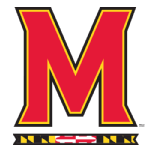Big 10 Power Rankings: Week 5
Welcome to your week five edition of these Big 10 Power Rankings! As discussed last week, these rankings are results based, in the sense that they judge what teams have actually done in games (and not how good they are perceived to be by the media). This diary will proceed as follows. First I will explain the methodology (including a major change from last week, as well as a proposed change for next week). Then I will present the rankings. Finally, I'll briefly outline some observations based on the results.
Methodology
Baseline Scores
- 2 – win over “good” team
- 1 – win over “solid” team
- 0 – win over “not good” team/loss to “good” team
- -1 – loss to “solid” team
- -2 – loss to “not good” team
NOTE: This system starts by assuming every team is "baseline average," that is to say, every team is expected to beat "not good" teams, expected to lose to "good" teams and expected to win/lose to "solid" teams in roughly equal measure. Anything above that is rewarded and anything below that is penalized.
NOTE: This system does not reward teams for wins over “not good” teams, nor does it penalize teams for losses to “good” teams. The baseline average team is expected to beat the former, lose to the latter and break even against “solid” competition.
NEW: Last week several commenters suggested I make the system for determining “good,” “solid” and “not good” more transparent. So this week, instead of rating each Big 10 team’s opponents individually, I’m just using Football Outsiders’ F+ rating system, like so:
- Good: #s 1-25
- Solid: #s 26-75
- Not Good: #s 76+
Note: in order to avoid endogeneity issues, I’m using the F+ rankings from the previous week (i.e. from before the current slate of games were played).
Home/Away Weight
- 0.5 – road win
- 0.0 – home win/road loss
- -0.5 – home loss
Margin of Victory Weight
- 1.0 – large win over “good” team
- 0.5 – large win over “solid” team/small win over “good” team
- 0.0 -
- -0.5 – large loss to “solid” team/small win/loss to “not good” team
- -1.0 – large loss to “not good” team
EXAMPLE: So a 6 point win over Northwestern this week (currently #17 in F+), would be scored as follows: 2.0 [no home/away weight] + 0.5 = 2.5. A 6 point loss to Northwestern would be scored like this: 0.0 – 0.5 [no weight for MoV]: -0.5.
Proposed Conference Game Weight
Unlike the human polls, this ranking system doesn’t distinguish between recent and older results. As a result, it also potentially overrates non-conference games relative to their importance as part of a conference power ranking system. So I’m wondering: does it make sense to add a +/- 0.5 weight for conference vs. non-conference games? That wouldn’t really change much right now, but going forward it would reduce the impact of early season results against non-conference opponents.
I’m not wedded to the idea, per se, though I think it might improve the system. I’ll implement it next week if you guys think I should, and leave things as is if the balance of opinion tilts that way.
Week 5 Rankings
[Note: the (+/-N) refers to movement up or down the scale since last week: +2 means a given team has climbed the rankings by two spots, say from #4 to #2 (i.e. it's inversely proportional to the numerical value of the rank).]

1. Northwestern (5-0, AP #13): 5.5
(=) Last week’s top ranked team does the most to improve their position this week by crushing “solid” Minnesota at home, but also benefits from previous opponent Duke moving up to #22 in week 4’s F+ rankings (which leads to their reclassification as “good”). Though most observers see Ohio State as the best team in the Big 10, Northwestern has—by far—accomplished the most through five weeks.

2. Iowa (5-0, AP # 22): 4.5
(+4) Iowa is week five’s biggest winner, moving up from #6 to #2. The most obvious reason for this is their (fairly lucky) road win against Wisconsin (#19 in F+). But the shift to using F+ has also benefitted the Hawkeyes in other ways, as previous opponent Iowa State barely squeaked into the “solid” category at #75 in F+ (and Pittsburgh is #50). It’s unlikely that Iowa State will remain in this category, so expect that score to decline somewhat. But Iowa is definitely better than expected.

3. Ohio State (5-0, AP #1): 2.5
(-1) A top five team by most national ranking systems, and the near unanimous preseason #1. Ohio State is undefeated, but have not impressed in victory. The Buckeyes remain at 2.5, as their road victory bonus for winning in Bloomington is canceled out by the small margin of victory over what F+ considered to be a “not good” (# 78) team going in to week five.

4. Michigan (4-1, AP #18): 2.0
(-1) No major change here except for a road win bonus against Maryland, as the system does not factor in large margins of victory against teams rated as “not good.” Still, getting a first road win under Jim Harbaugh is nice. Next week’s matchup against Northwestern provides an opportunity to make a major move upward in these rankings. It will also tell us a lot about where we are as a program.

5(t). Michigan State (5-0, AP #4): 1.0
(-2) Starting from a raw score of 2.0 (for wins over “solid” Oregon and Air Force), MSU is then penalized for failing to win convincingly against bad teams like Central Michigan and Purdue, while another MoV penalty cancels out a road win bonus against WMU. Bottom line, this system expects good teams to impose their will on inferior opponents and the Spartans have yet to do that in a single game. And they almost lost to Purdue (who are very bad). So it still remains to be seen whether MSU is a sleeping giant or paper tiger. A very tractable schedule, though, ensures that latter eventuality probably still translates to 9 wins and a decent bowl game. Bring on Rutgers!

5(t). Minnesota (3-2, AP NR): 1.0
(-2) I’ve never believed in this team, given that they graduated like 90% of last year’s offensive production (i.e. Cobb/Cobb/Maxx). Now Northwestern has exposed the Gophers for the average-plus team they are. For those paying close attention to scores, Minnesota has beaten two “solid” teams according to F+ (Colorado State and Ohio), but is penalized for the loss to Northwestern, since the Wildcats were classified as “solid” by F+ in week four (#26). In other good Gophers news, Purdue and Nebraska are up next.

7. Illinois (4-1, AP NR): 0.5
(+3) This week Illinois beat a struggling Nebraska, whose fans may be regretting the offseason coaching change right now. Prior to the game, though, Nebraska were rated “solid” (#38 in F+). Strangely, Middle Tennessee also qualifies as “solid” (#69 in F+). Nebraska is likely to be downgraded next week, but still—for a team that projected to be straight-up bad, Illinois looks surprisingly mediocre so far, and that’s an improvement over the Tim Beckman era.

8. Wisconsin (3-2, AP NR): -1.5
(-1) Badgers has a sad. On the other hand, the Big 10 West is pretty bad. Wisconsin should be okay, if not much better than okay.

9. Indiana (4-1 AP NR): -2.0
(-1) The Hoosiers definitely look better than expected, and came ever-so-close to upsetting the defending champs this week. But three unconvincing wins over teams that are clearly “not good” does hurt. Even still, Indiana has four very winnable games left on its schedule (away at PSU, Maryland and Purdue, and home versus Rutgers), so bowl eligibility looks to be in the cards.

10. Penn State (4-1, AP NR): -2.5
(+1) PSU may be 4-1, but they’ve struggled against 3 out of 4 “not good” opponents and lost to the only “solid” team they’ve faced. This is the kind of team that might have a surprising performance or two in them, but I only see one likely win on their remaining schedule (home vs. Maryland). The rest of the schedule ranges from tossup (home vs. Illinois) to near-certain loss (away at MSU, OSU, Northwestern). Bowl eligibility is still in question, pending next week’s match against Indiana.

10(t). Maryland (2-3, AP NR): -2.5
(-1) Maryland isn’t very good, but at least their losses are fairly explainable—both West Virginia and Michigan are rated as “good” by F+, and thus the beat downs are expected results vs. an average team, and Maryland, so far, appears to be a moderately below-average team. Sadly, though, the Terrapins really only have one more game on their schedule that I’d consider a likely win (away at Rutgers).

12. Nebraska (2-3, AP NR): -4.0
(=) This is not a good debut season for Mike Riley, though the fact that the Cornhuskers have been “in” each of their losses suggests that this team * might * be able to put it together at some point. Or they might collapse, like our 2009 team did midway through the Illinois game. There are only two likely wins left on the schedule (away at Purdue and Rutgers), so they’ll have to pull an upset if they want to make the postseason. Even odds on that happening.

13(t). Purdue (1-4, AP NR): -4.5
(=) Purdue is bad. How they almost beat MSU is hard to explain—maybe MSU isn’t that good, or maybe it’s just one of those mysteries, like how Ty Willingham’s very bad Washington teams consistently gave Pete Carroll’s USC a game but got shellacked by everyone else in the Pac-12. Unfortunately for the Boilermakers, this system does not reward closer-than-expected losses to “good” teams. On the other hand, it does penalize home losses to “solid” opponents—and Purdue has two of those (and the loss to VT was a blowout).

13(t). Rutgers (2-2, AP NR): -4.5
(+1) Rutgers “benefits” from not playing this week. Next week they’ll be the punching bag MSU unloads its frustrations upon. But hey--one dude might be out of legal trouble. That's something, right? Right?
Summary Stats
- Mean: -0.3
- Median: -0.5
- Range: 10 (5.5 - -4.5)
Observations
Though this ranking system does not predict who would win in a head-to-head matchup (whereas F+ or the AP poll do attempt to do that), it does indicate whose early season records denote accomplishment, and whose do not. Northwestern and Iowa are the teams that have done the most so far, though few, I imagine, would rate them as best in conference. Still, right now it looks like the Big 10 West will come down to these two, and both look much better than expected.
These rankings also confirm what many of us have long suspected: that the human polls are overrating OSU and MSU based on preseason biases. The difference is that OSU has a much higher talent level than anyone else in the conference. By contrast MSU's problems strike me as more serious. Under Dantonio, MSU has relied on effective defensive scheme and a remarkable upcoaching system on both sides of the ball to paper over gaps in raw athleticism relative to elite opponents. This year the scheme, at least, appears to have moved to Pittsburgh. On the other hand, look at their schedule: if everything goes pear shaped, they still probably win 8 games. That's a nice cushion.
As far as Michigan goes, well, the system rates the BYU win higher but not much else. We need another win against someone with a pulse to demonstrate that we are really back, and not just a team that's going to hang around the bottom edge of the AP poll for the rest of the year. That said, this is as good a start as I've seen over the past decade. I'm quietly confident we are on track for a 9 win season, including a rivalry win (my guess would be over MSU).
Finally, the system also tells us not to buy Indiana (despite being game against OSU) or PSU at 4-1. As I see it, Indiana is headed for a respectable 7-5 season. PSU, by contrast, may struggle to earn bowl eligibility. The system is more bullish on Illinois, which just shows how terrible Beckman was.
...oh, and Rutgers is bad. Also Purdue. So MSU should feel bad about almost losing to them.
***
Okay, that's all for this week. As always, if you have some constructive suggestions, I'm listening. Also, please do tell me what you think about the proposed conference game weight!
October 6th, 2015 at 9:11 PM ^
MINN and MSU being tied is absurd.
I think you ought to use the Massey Composite rather than F+ by itself. The Massey Composite is an aggregate of F+ and all of the advanced statistical databases like it. (FWIW it ranks Michigan 13th, MSU 16th, and Minnesota 55th.)
And I know the methodology can't account for details like what follows, but Minnesota has a three point win over Colorado State, a three point win over Kent State, and a three point win over Ohio -- all games that were extremely close throughout. Minnesota has played its first team on every snap this season and they're still less than two touchdowns away from being 0-5 with three losses against very bad teams.
MSU meanwhile has cruised out to leads of, in order by week, 24, 10, 28, 17, and 21. And they've done so while rotating second and third-stringers into the game. They then went full Tressell-ball on offense while playing exclusively third and fourth stringers in four of these five games.
Again, I know different ranking systems are going to value different things and you can't fairly use a single head-to-head result as evidence that a system is completely flawed. But I would caution my fellow fans against comparing MSU to Minnesota. One team is lucky that they have any wins at all -- the other is undefeated and has destroyed opponents when they have put the foot on the pedal.
October 6th, 2015 at 9:47 PM ^
Sent from MGoBlog HD for iPhone & iPad
October 7th, 2015 at 12:20 AM ^
And I don't mean to knock your system, which is pretty cool. It's just that the rankings don't reflect what seems to be supported by both common sense and advanced analysis in this particular instance. Minnesota isn't anywhere near as good as MSU -- any system that says otherwise is in a little bit of trouble.
October 6th, 2015 at 10:30 PM ^
on offense late vs Purdue? I don't believe you, but if it were true, that would be an incredibly poor job of coaching.
October 7th, 2015 at 12:15 AM ^
They brought the starters back in for the final defensive series. And completely crushed Purdue on that series (as any above-average power conference defensive unit should) .
Also, they like to rotate units as opposed to the entire defense. Often they'll have the first string defensive line and linebackers out there with the third or fourth string defensive backs for example.
October 7th, 2015 at 10:09 AM ^
They have a fourth string of DBs?
October 7th, 2015 at 11:52 PM ^
This is what Sparties tell themselves to help them sleep at night, but it's simply not true that Dantanio is extensively playing third and fourth string players late in games.
October 8th, 2015 at 4:37 PM ^
More so on defense.
October 6th, 2015 at 10:35 PM ^
Sent from MGoBlog HD for iPhone & iPad
October 7th, 2015 at 11:16 AM ^
I absolutely love your approach here, and I think it really captures what a team has accomplished over general perceptions or wild-ass guesses on team strength. But I have an idea for your methodology that might help.
Your good/solid/not good F+ rankings is a great start to breaking up teams in various categories. But I'd say a win over the #4 team, for example, is vastly better than a win over the #22 team, and this methodology ranks them the same. Even worse, I'd say a win over the #36 team is way better than beating #63, and your system also ranks those as equivalent.
I'd suggest a hierarchy that looks more like a bell curve distribution, with a small group of dreg teams on one end, a small group of elite teams on the other, and a mass of middling teams in between. It would mean a lot more work for you, but I think the results would be more accurate. For example, it might answer the debate above over Minny and Sparty being tied.
Here's the distribution I'd propose:
F+ Rank # of Teams Team Type
121-128 8 Horrible
109-120 12 Bad
85-108 24 Poor
45-84 40 Mediocre
21-44 24 Solid
9-20 12 Great
1-8 8 Elite
Any wins over non-FBS teams could be taken out of the equation. Northwestern looks good now, but they should be dinged for beating Eastern Illinois.
I know moving from a three-tiered to seven-tiered breakdown might mean a major headache, but it would be clearer and more accurate. I might give it a shot myself.
October 7th, 2015 at 1:49 PM ^
It's definitely one to think about, especially the broader point of considering more than 3 categories. I may do that next season. However, I think 7 categories creates too many headaches, both in terms of workload (and my time for this is finite) and in terms of score fluctuations. After all, there will continue to be a LOT of movement among these 7 categories, which reduces solidity of scores over time. There's still movement among 3 categories, but it's more stable.
Also, I'm not sure I see the MSU/MN tie as a "problem," as it only violates the common sense test (which is that MSU is "better"). But this system purposively avoids integrating any sort of common sense-based factors into the equation. In part it's a thought experiment--to see what rankings look like if you deliberately avoid that kind of stuff. As an effect, especially early, sometimes they look a bit weird.
That said, the conference/non-conference weight I suggested would break the tie. It would give MSU +0.5 and MN -0.5, making the difference a whole point.
October 7th, 2015 at 1:54 PM ^
I'm considering the above mentioned weight of +/-0.5 for conference wins/losses, and hope to get some input this week.
If you are interested, here's how this week's scores/rankings would differ if it were implemented:
- Northwestern: 6.0
- Iowa: 5.0
- Ohio State 3.0
- Michigan: 2.5
- Michigan State: 1.5
- Illinois: 1.0
- Minnesota: 0.5
- Wisconsin: -2.0
- Penn State: -2.0
- Indiana: -2.5
- Maryland: -3.0
- Nebraska: -4.5
- Purdue: -5.0
- Rutgers: -5.0
NOTE: UW and PSU tied at #8; Purdue and Rutgers tied at #13
And summary stats:
- Mean: -0.3
- Median: -0.8
October 7th, 2015 at 8:13 PM ^
have flaws but I like yours and I think it is useful way to compare accomplishments in a dispassionate, unbiased way.
October 7th, 2015 at 10:56 PM ^
October 8th, 2015 at 9:59 PM ^
Edit: my post serves no productive purpose. Until I have an honestly better idea, I'll say thanks for posting this.
February 16th, 2016 at 6:43 AM ^
· I really enjoyed reading your blog, you have lots of great content. I look forward to reading more posts from you.
https://www.rebelmouse.com/mothersladla/trust-flow-1570727175.html
Comments